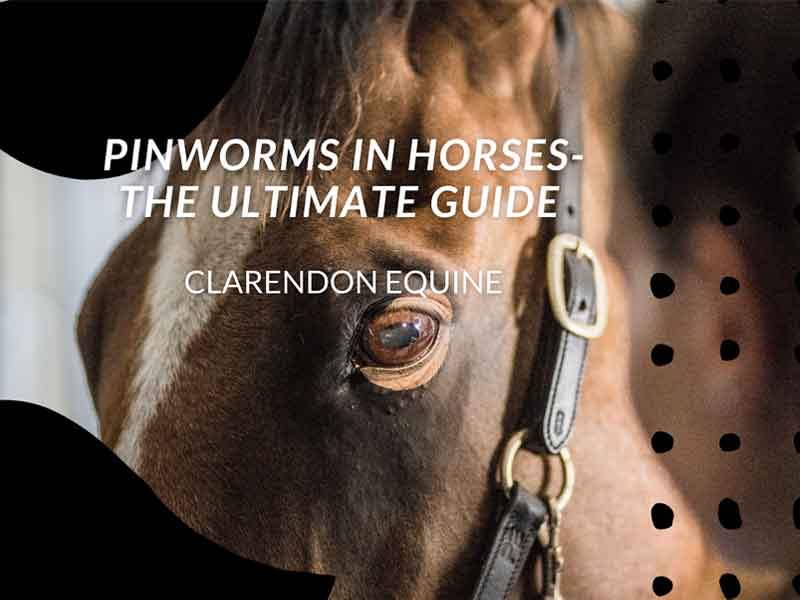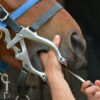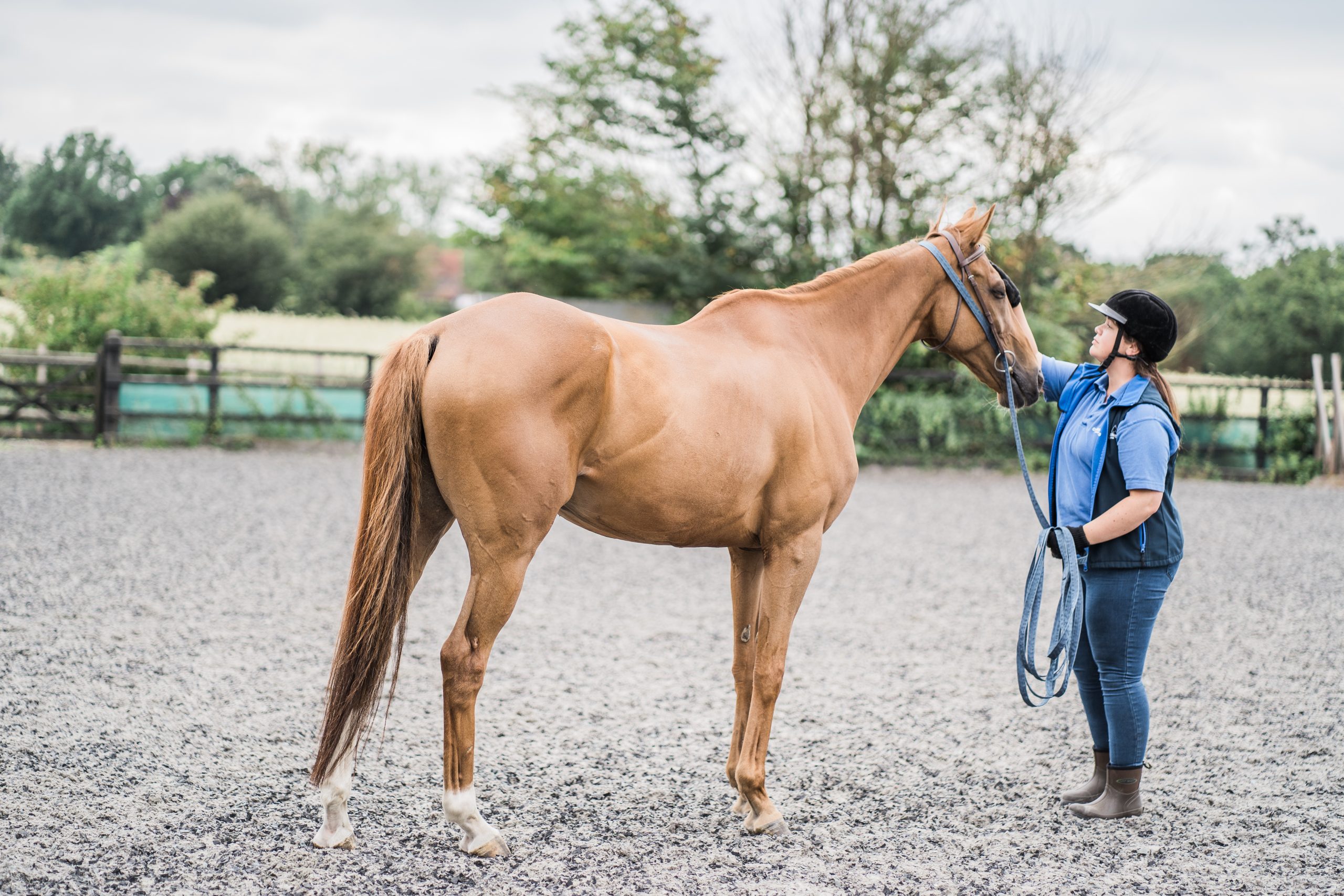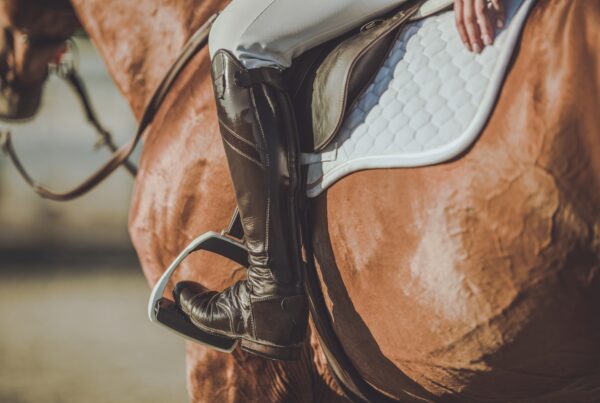One day, you are sipping your coffee and enjoying the morning breeze when you suddenly look out the window and see your horse scratching their bottom against the fence. It’s probably nothing that bad, you think. But then you keep observing them, and then suddenly it dawns upon you一 why are they doing it so aggressively, though? Oh no, is it the pinworms?
Pinworms in horses are a pervasive problem, especially younger ones, and without proper treatment, they can spiral out of control and cause severe pain to your horse.
This guide will discuss what pinworms in horses are, how they are caused, how you can prevent them, and what treatments are available.
What Are Pinworms in Horses?
Pinworms, also known as Oxyuris Equi, function quite differently than other worms. It is vital that you fully understand what pinworms are and how their lifecycle works so that the proper pinworm treatment is given.
How Are Their Life Cycle Different?
The means of getting pinworms is direct. This means that there are no intermediate hosts and no migration through other organs.
These worms can take up to 5 months to develop fully from an egg to an adult, whereas other worms have around 3 weeks before their life cycle ends. Usually, other worms feast in the small intestine or colon, but pinworms travel to the rectum.
When they do, the adult female pinworms exit the rectum and lay eggs around the anus of the horse. And, thus begins the severe butt-scratching against the fences.
When the fertilization occurs, the females can produce up to 60,000 eggs and then die, leading to the worms being passed down with the droppings. It takes only a couple of days for the larva to develop fully. Any dislodged pinworm eggs can become infectious within 3-5 days.
How Do Pinworm Infestations Occur?
Even though this might seem like this should’ve been on the first stage, it falls on the third. The third stage is the infection stage, where the horse licks off a surface and ingests the worms. Once consumed, the larva travels to the small intestine, where they hatch and pass to the large intestine, and this may cause low-grade irritation.
Once they have reached the large intestine, the larvae move into the caecum, a pouch that connects the small and large intestines, and finally enters the colon before they moult into fourth stage larvae. All of this takes place within 8-10 days after being ingested.
It takes 45-60 days for the moult to hatch into immature adults after the infection and an additional 100 days for adults until they reproduce. After an infection, the females take around 139-156 days to lay their eggs.
Pinworm Symptoms
The most common sign of pinworm contraction is when you repeatedly see that a horse aggressively scratches their butt against something. Sometimes, you can quickly tell that something is wrong when you notice the following symptoms:
- Loss of condition
- Restlessness
- Inflamed skin with infection around the tail head and rump
- Hairless patches of skin and broken hairs
- Intensely itchy rump and tail head
If you notice either of these symptoms, the best course of action you can take is to contact your nearest equine clinic or your local vet. But before contacting them, check around the anus for any gelatinous substance, and if there is, use sticky tape to remove it. It will help the vet look for eggs later on. Sometimes, the eggs or the female worm may be present in the dung pile.
The Treatment For Pinworms
The best way to prevent pinworms in horses is to maintain proper hygiene and provide an effective parasite wormer.
Hygiene
Pinworm infections are direct, so every surface is thriving with parasites, and they can be tough to eradicate. In addition, they are quick to spread, and that’s precisely why you need to manage and execute proper hygiene.
A proper hygiene routine includes disinfecting and cleaning any area that the affected horse has contact with: feed or water bins and grooming equipment, fence posts, stable doors, and covers.
Note that it is equally as crucial that you clean around your horse’s perianal, dock and tail area with disposable wipes. Using sponges can make matters worse and spread the parasites even more. After cleaning the designated area, make sure to dispose of the wipes completely.
As the female worms tend to lay eggs at night, make sure to clean your horse’s bottom every morning. During those sessions, apply petroleum jelly or vaseline around the perianal area.
Which Wormer Kills Pinworms In Horses?
Resistance to many of the regularly used worm treatments is very high in many populations now. This is particularly so with ivermectin or moxidectin based wormers. Please speak to your vet to discuss the most appropriate treatment or action if there is a confirmed burden of pinworms in your horse(s). Resistance issues mean we try to take a targeted approach and only treat horses where considered appropriate since the aim of treatment now is not to completely remove work burdens, but to work out the level of work burden in a population which does not cause clinical disease and also minimises any increase in resistance to commonly used antiparasitic medicines.
In Conclusion
Pinworms very rarely cause clinical disease that will result in major illness/ weight loss/ diarrhoea in your horse (especially when compared to redworm larvae). We often refer to them as the nuisance worm since they have the ability to pass easily between horses, but do notbcause severe parasitic disease. Always contact your vet or Suitably Qualified Person (SQP) if you have concerns about pinworm burdens in your horse(s).
To read more on equine health, consider checking out our other blogs.








